Are you searching for the best packing tips for moving home?
Although it is an exciting prospect to move to a new property before you get there much needs to be done.
Frequently cited as one of life’s most stressful events, moving home is, without doubt, a difficult and anxious process for all involved including the children and pets.
With so many things to think about, it is incredibly useful to have a written checklist of what needs to be done so that nothing is missed, helping to avoid a complete meltdown on moving day.
We have composed a moving day list which we hope will prove invaluable and ensure that your moving day unfolds with minimal drama.

Move house yourself or use a removal company?
Each has its merits.
A one-bedroom flat is a pretty simple affair and easily doable on your own with a hired vehicle or you can make use of a “man and van” service.
If you live in a 3- or 4-bedroom home, it is a different affair entirely and best left to the experts.
You would be surprised at how many people try and cut corners and end up in A&E in the move day!
Household removals are incredibly hard, heavy work, and believe it or not there is a measure of skill, technique, and organisation involved.
House Removal Quotes
One of the first steps on the list is getting removal quotes as soon as possible so that financially you are aware of the costs involved.
There are plenty of companies out there vying for business.
Your chosen company will arrange for an expert surveyor to visit your home personally, or due to Covid, undertake a video survey of each room so that he can determine the volume of goods to be moved and calculate his quote accordingly.
It is imperative that you use a reputable removal company that is a member of BAR (British Association of Removers) www.bar.co.uk. They exist purely as a UK regulating body.
Members of BAR must adhere to strict standards and rigorous inspections.
If you are moving internationally, your removalist needs to be registered with FIDI (Federation D International De-Management Internationale). www.fidi.org.
Similar to BAR they regularly inspect their members via stringent and comprehensive quality standard checks.
In the unlikely event that something does go wrong or isn’t carried out to your satisfaction by one of the member companies, these regulatory organisations will provide a course of action to resolve any problems or complaints you might have.
Both BAR and FIDI advertise all affiliated members on their respective websites.
Alternatively, look out for the BAR and FIDI company logos displayed as real-time links on all member’s individual websites.
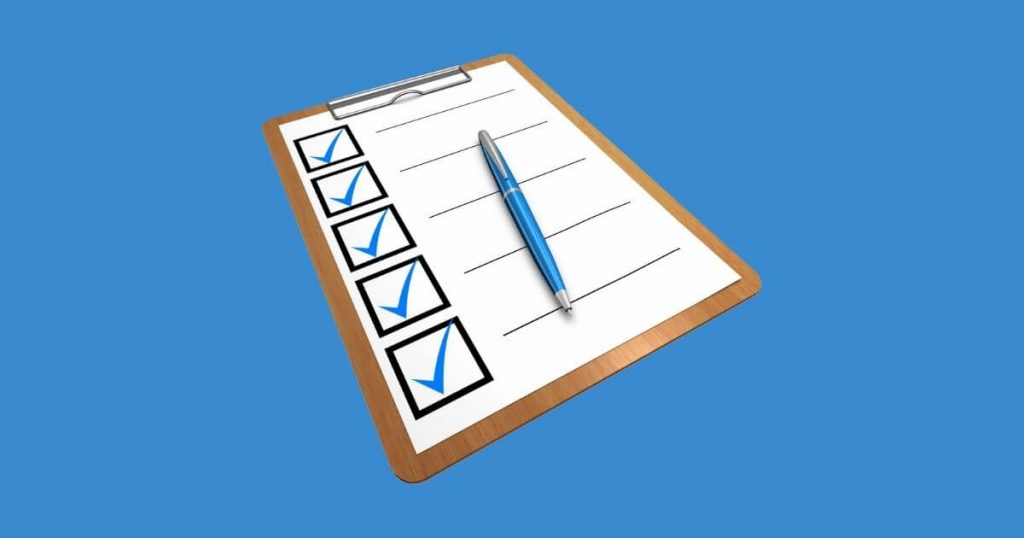
Prepare a Moving Checklist
Writing the checklist is the first important step to an organised, smoothly run move and it is never too early to start it.
Your list doesn’t necessarily have to be in any particular order, it is simply an “aide memoir” so you don’t forget anything.
- Declutter. Way before the move date, go through the house room by room and declutter.
- Sell. Unwanted items including clothing and furniture can be sold. Shpock, Vinted or Gumtree are great platforms for this. You could put the cash raised towards the removal costs.
- Donate. All towns have either charity shops or clothing banks only too happy to take your unwanted shoes, clothing, bedding, and towels which raise money for good causes.
- Consider hiring a skip. Ideal for the quick disposal of really old and damaged goods as well as any garden waste. Saving you time with repeated visits to the local recycling centre.
- Get three move quotes. You can compare each and decide which company you like most or which offers the best value for money.
- Packing. Your chosen removal company should supply you with a selection of boxes. Alternatively you can purchase boxes online or from a number of DIY stores. You can then start to pack personal items yourself.
- Storage. You might require some of your possessions to be stored for a while. It will give you time to get organised. Many removal companies offer storage, just ask your surveyor or do a google search in your area.
- Prepare an emergency box (more on this in a later chapter)
- Items not to be packed area. Clear an area such as a cupboard where you can place all the boxes, phones, important paperwork and your emergency supplies away from the removal team. Don’t forget to put a note on the door and inform them so they don’t get put with everything else on the move day.
- Take photos of the boxes. Although you will get an inventory from the removal team, which they record as they pack, there is always going to be something you can’t find when you get to your destination. Taking photos is the quickest way to record what is in each box you pack yourself.
- Moving your PC. Do a total PC back-up either to the cloud or hard drives. Plenty of work has been lost due to not doing this.
- White Goods. Fridges, wine coolers and freezers cannot be moved if they are full of food/drink. Run down the contents of each, defrost and clean.
- Renters. Don’t forget if you are renting, taking photos of furniture etc already in the property when you moved in is proof that they were left in good condition. When rooms are empty inspect the property for damage and photograph that as well.
- Cleaning. We all have different standards; however, it is polite to leave your home in a clean condition ready for the new owners. It is generally a contractual requirement for rentals to be cleaned thoroughly to ensure a full deposit return.
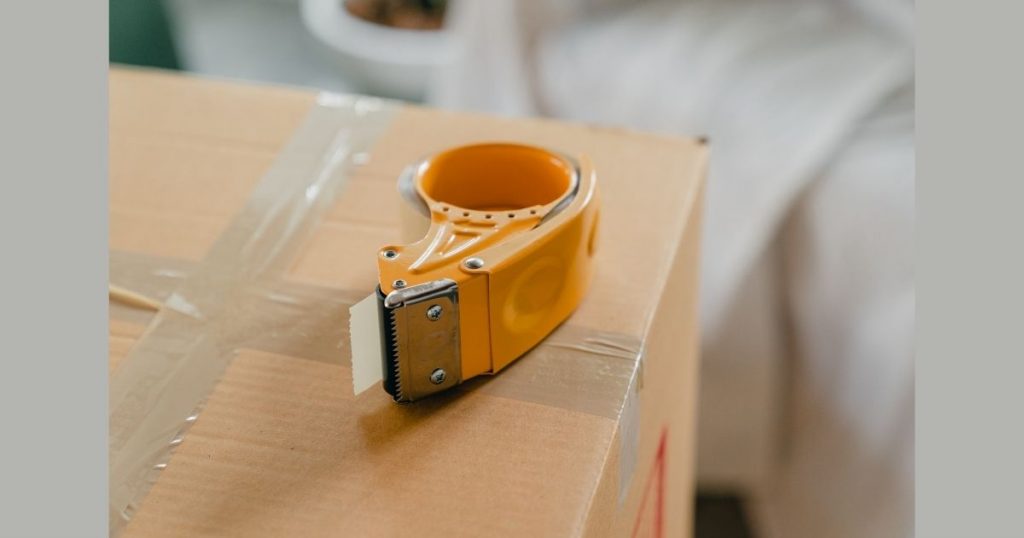
Packing Supplies
You always need more than you think is the general rule here.
Having everything you need on hand before you start filling boxes is a good idea.
Another plus to using a removal specialist is that they will supply you with materials before the move if you ask.
You will need an assortment of materials to cover all eventualities:
- Several rolls of thick packing tape
- Bubble wrap or tissue for delicate or fragile items
- Scrunched up newspapers make additional shock absorbers for fragile items such as glasses
- A selection of boxes which are available in plenty of sizes. Tip: pack books into smaller boxes as they are heavy to move
- Labels and a couple of thick marker pens will ensure each box’s contents are easily identifiable. 30 seconds writing a label of contents will save you hours of searching later!
Other useful supplies to keep on hand:
You always need more than you think is the general rule here.
Having everything you need on hand before you start filling boxes is a good idea.
Another plus to using a removal specialist is that they will supply you with materials before the move if you ask.
You will need an assortment of materials to cover all eventualities:
- Several rolls of thick packing tape
- Bubble wrap or tissue for delicate or fragile items
- Scrunched up newspapers make additional shock absorbers for fragile items such as glasses
- A selection of boxes which are available in plenty of sizes. Tip: pack books into smaller boxes as they are heavy to move
- Labels and a couple of thick marker pens will ensure each box’s contents are easily identifiable. 30 seconds writing a label of contents will save you hours of searching later!
Other useful supplies to keep on hand:
- Cable ties
- String
- Small sandwich bags are very useful for storing nuts and bolts from dismantled furniture – just ensure you label the bag clearly.
Larger plastic bags are also useful for holding PC/TV/game console leads and controllers. Again, ensure they are clearly labelled so you know exactly which TV etc the leads belong to.
- Cable ties
- String
- Small sandwich bags are very useful for storing nuts and bolts from dismantled furniture – just ensure you label the bag clearly.
Larger plastic bags are also useful for holding PC/TV/game console leads and controllers. Again, ensure they are clearly labelled so you know exactly which TV etc the leads belong to.
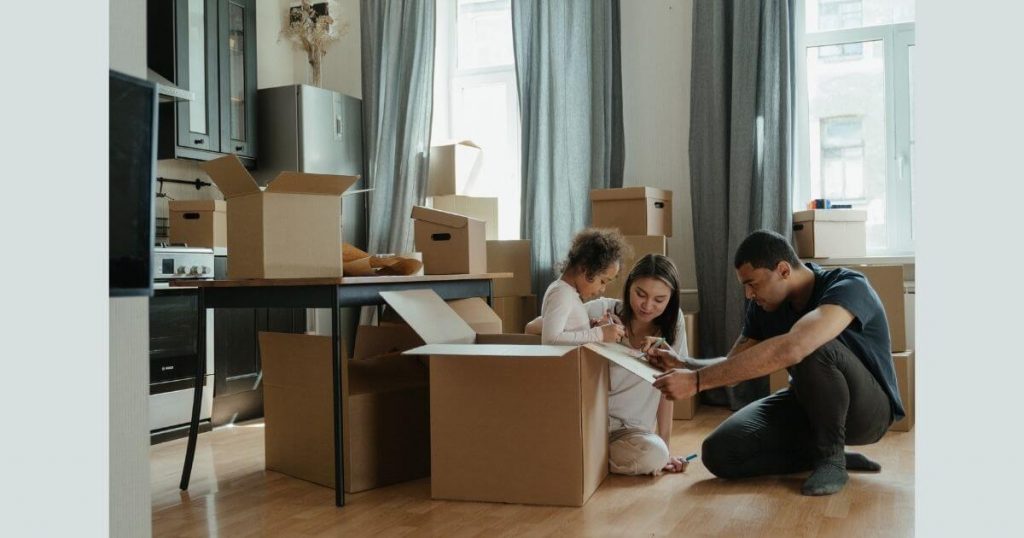
Preparing For the First Night – How to Pack an Emergency Box
It is an excellent tip to have an “emergency” box prepared for the first night in your new home.
It should be clearly labelled NOT TO BE PACKED, just in case the removal team put it with everything else.
You are going to be tired and hungry and unable to locate anything easily for a couple of days so this box will be a godsend on the first night or two.
Most important to mention is that you keep your car keys and mobile phone in a secure place. It is easy to have left them in a coat pocket, a different handbag or misplace them somewhere on the hectic move day.
This same rule applies to passports, particularly so if you are undertaking an international move.
Items you should consider including in the box which you will use immediately:
- Tea, coffee sugar and milk, salt & pepper
- Snacks
- Knives, forks, and plates (if you have pre-prepared an easy meal)
- Pet food
- Toiletries – toothbrushes and toothpaste, loo roll and other personal hygiene items
- Medication – you may have prescription medication which you need on hand at all times
- A basic first aid kit
- A basic tool kit to re-assemble beds in particular
- Some cleaning items such as washing up liquid, dish cloth, tea towel and disinfectant wipes
- Baby’s essentials including your child’s favourite bedtime toy
Pack room by room
Tackling each room in the house one by one is another good hint.
If you aren’t focused, you will end up running around like a headless chicken with a mixture of the bathroom, bedroom, or kitchen items all in the same box!
Some things you may well want to pack yourself in each room. If you do, make a separate inventory list for the contents of each box and label them clearly ie, Fred’s room, our room, etc.
Bathroom
Lots of items in this room will be fixtures so require no packing (loo roll holders, fitted bathroom cabinets, etc)
- Have good sort out and ditch any out-of-date bathroom supplies or almost empty containers before packing
- Any liquid toiletries (perfumes) or creams could have loose tops, ensure all lids are tightly closed
- Consider using a hard plastic box and not cardboard for liquids just in case of spills
- Pack electrical items such as beard trimmers, razors, hair driers etc. in their own box
- Make the bathroom the last room you pack, you will need to use it right up until the last, so leaving a toilet roll, hand soap, shampoo and a couple of towels makes sense. Plus, these can be placed close to your emergency box on the move day, so they are ready and at hand for the new place.
- It is very important to pack a box solely for medical supplies which is easy to find and not so easy to for little ones to get into.
- Ensure any medication which is out of date is taken to a pharmacy for proper disposal.
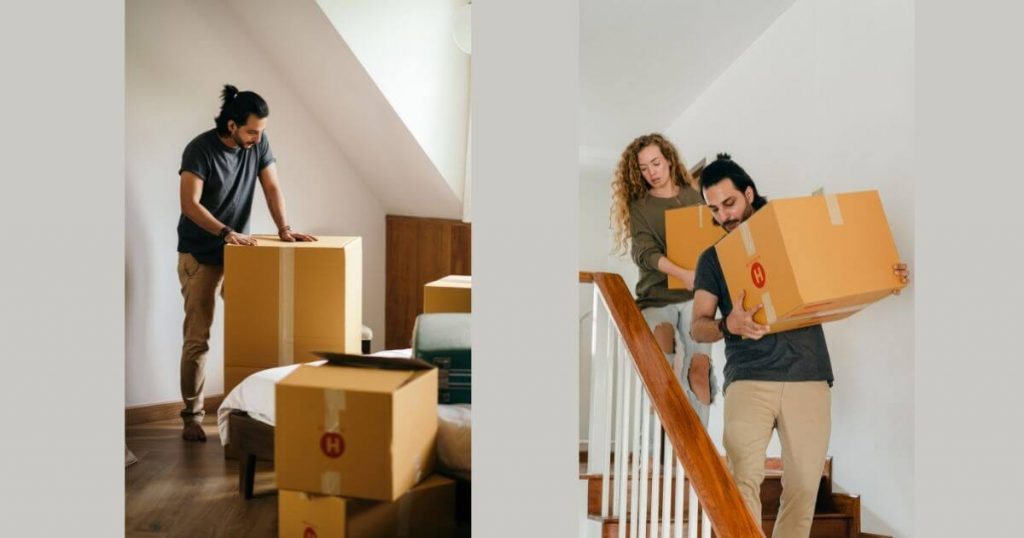
Bedrooms
Bedrooms are another area where we collect a whole range of things we are not using or don’t want anymore.
Under the bed and at the back of wardrobes are both places we shove things just to get them out of the way.
No need to stress as your removal team will pack, wrap, and carry all the heavy furniture (beds, wardrobes, dressing tables, etc) into their lorry along with the few boxes you have packed yourself.
- As with other rooms, first start by having a clear out.
- Only pack what you consider to be either private or personal possessions, leave everything else to the experts.
- Donate or sell clothing which is too small, or you no longer wear and furniture which are either not suitable in your new house or damaged and going to be replaced.
- Hold back a few items of clothing so that you have something to wear in the run up to your move.
- Remove curtains or any window coverings you have decided to take with you. This can be done on the move day after the room is emptied.
- Bedding/duvets will also be needed immediately. Ensure they are clean and ready to use on the first night. All other bedding can be boxed up and clearly marked according to wo whose room you are packing.
- Pack fragile personal items carefully and label the boxes clearly so that the removal team are well aware of the contents when they load them onto the vehicle.
- Clothing gets crumpled very easily so try and save yourself time having to re-wash and iron absolutely everything by packing as neatly as you can.
Lounge/dining room
Generally, this is one of the easier rooms to pack as most of your belongings here are not so personal, however, it is also the room that is used by everyone. The removal team will handle the majority of lounge items.
Pictures and wall hangings, lamps, sofas, dining tables and chairs, coffee tables, and removable shelving will all be protected and covered.
- There may be very large items such as pianos to move. You can depend on the removal team to know just how to prepare a piano for removal. Tip: make sure you express to the surveyor when he visits that you are taking the piano.
- Many lounge diners double up as home offices so there will be PC’s and printers to move. Once you have carried out your back up of files etc, you can unplug all leads and pack into bags. Once again, clearly labelled.
- Take down and pack window coverings.
- Roll up rugs and secure with string.
- Empty contents of drawers into labelled boxes. Smaller drawers can be shrink wrapped.
- Books, important files, and documents you may wish to also pack yourself at this stage.
Kitchen Packing
The kitchen can be one of the most daunting rooms to tackle in the house as there are so many small and breakable items to be dealt with.
Although once again, the removal team will pack everything for you, you may have some sentimental items you want to pack yourself such as a special dinner service, expensive glasses, or heirlooms from family members you have inherited.
- The same method applies to the kitchen as with all other rooms. First have a clear out discarding old plates, cups, glasses etc before you start.
- You will need plenty of wrapping for your delicates such as glass and bone china.
- Larger pots and pans can more or less be packed with little padding but beware not to over fill boxes making them heavy to move.
- Smaller drawers can be move just as they are wrapped in cling film to save the contents spilling out.
- Some boxes can be padded using tea cloths and small towels before placing in the box.
- Remember to pop some cutlery, mugs, and plates into the “emergency box” at this stage.
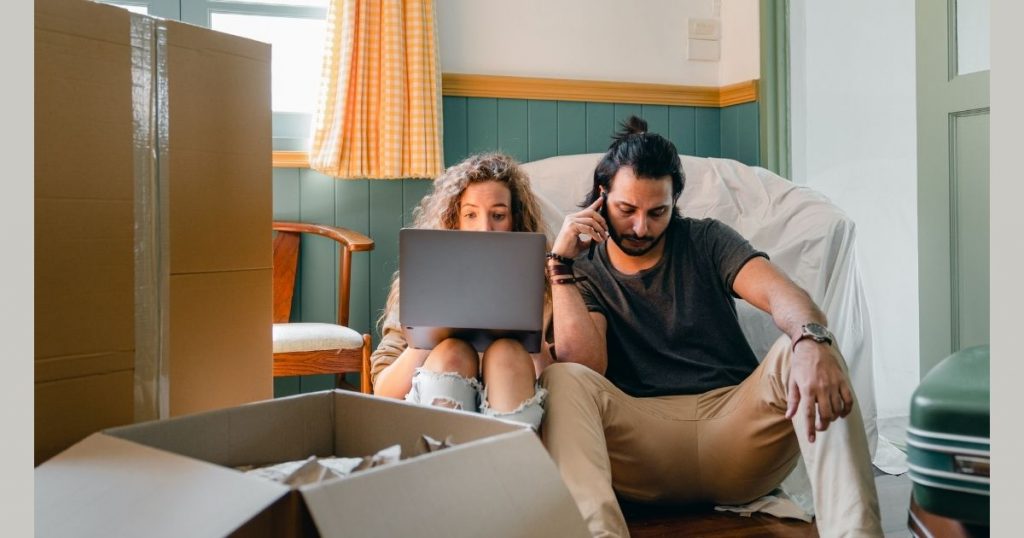
Final tips and advice:
Garage Clearance
It is so easy to over clutter your garage which is fine until you realise it is another space you have to manage the clearance for when you move out.
- If you hired a skip, much of the unwanted bits can be thrown into it. It is worth bearing in mind, not everything can be put into the skip.
- All hire companies have their own regulations but as a rule they will not accept any medical waste, electrical appliances, white goods, TV’s, mattresses, batteries or old tins of paint solvents, fuels, or asbestos of any kind.
- The good news is like the attic, the garage is another area you can start on way before the move.
- You may even want to enlist the services of a local professional domestic clearance company to do all the hard work for you.
- Be sure to sweep the garage out leaving it spic and span for the new owners.
A final word regarding attic clearance
Even worse than the garage, there is absolutely no doubt that attic space in the majority of homes becomes the final resting ground for old, broken, or unused items over the years.
This is one area where you can totally underestimate the time and effort it takes to clear.
It is often awkward to access requiring a ladder.
It can also be dangerous as you attempt to bring items down from it.
Another problem with this area is that many of us tend to store personal treasures such as children’s schoolbooks and reports, old photo albums, toys, and all manner of baby paraphernalia including pushchairs, highchairs, and cots.
Although much of the items have not been touched for years, it takes time to rummage through and sort them. It very often becomes a trip down memory lane which can take ages.
Nonetheless the great thing about the loft is that the chances are you haven’t touched its contents in years.
Thus, you can tackle it weeks before everything else.
- Have yourself yet another good sort out well in advance of the big day.
- Another tip here. The surveyor will want to poke his head into the attic in order to estimate how much there is to take out and materials required to pack.
- No matter what your personal reasons were for moving, it is right to leave the house clean and in good order for the new owners, it is just good etiquette.
Good Luck
Despite the whole affair being a major disruption to your life, relocating offers us the opportunity to de-clutter and shed a whole lot of rubbish, always a good thing.
After all is said and done, it is now time to look forward to a new chapter in your life.
Someone once quoted “Life is about moving on, accepting changes and challenges and adapting to them and looking forward to what makes you stronger and more complete”.
If you enjoy reading this post, you can check out our moving resources page for more on other useful moving articles here.
We wish you all the very best in your new home!!




